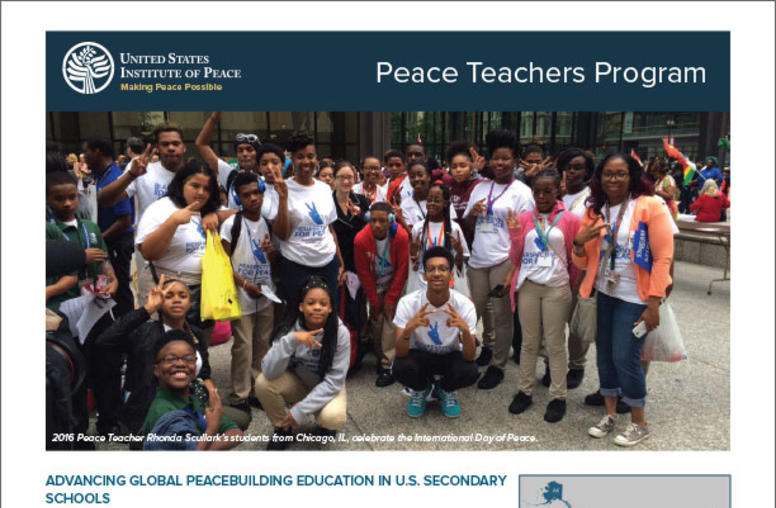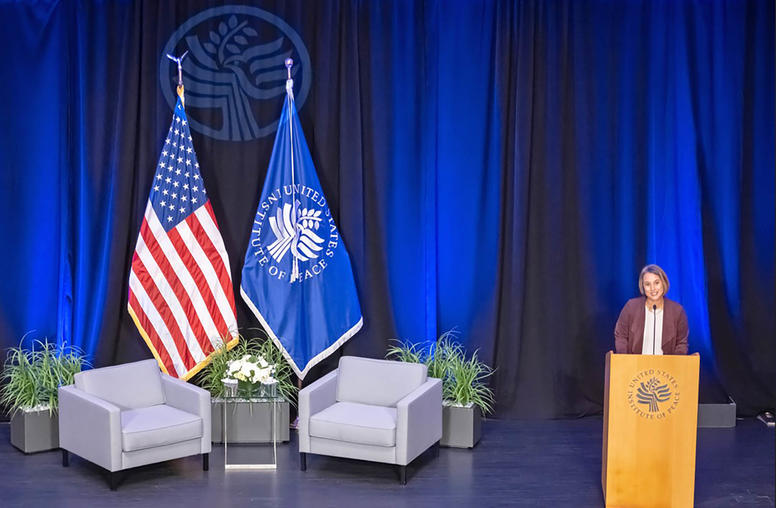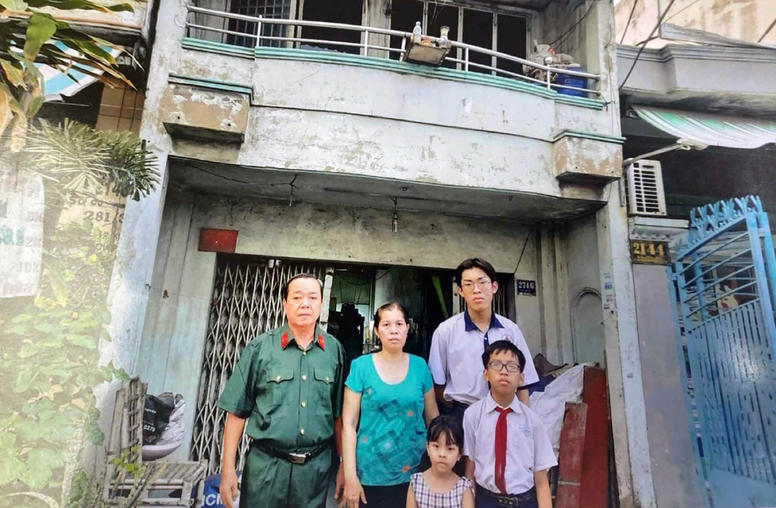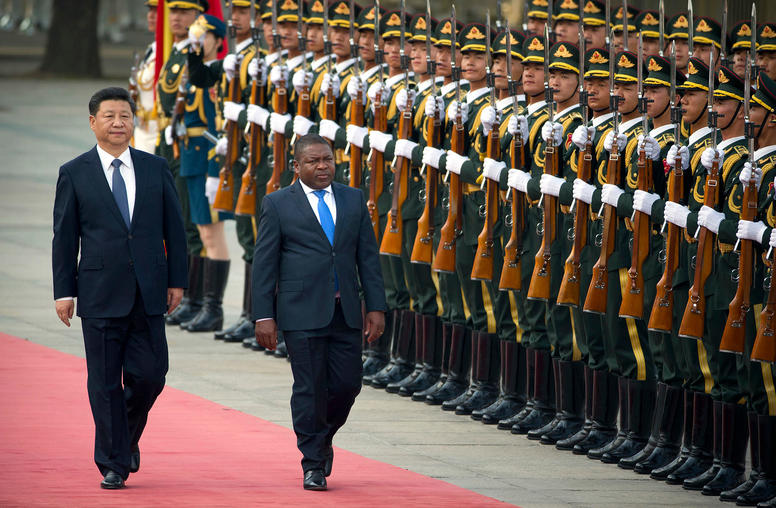Mobilizing to Transform Conflicts Amid Tight Budgets, Shrinking Space
In an era when Western citizens are averse to protracted and costly military interventions, and corrupt regimes around the world feed instability, there’s a pressing need to identify violence-prevention approaches that hold the greatest promise. During a professional life working with non-violent activists and movements, I’ve developed a keen appreciation for the power of purposeful mass mobilization and strategic non-violent action led by and for local communities to advance rights, justice and good governance.
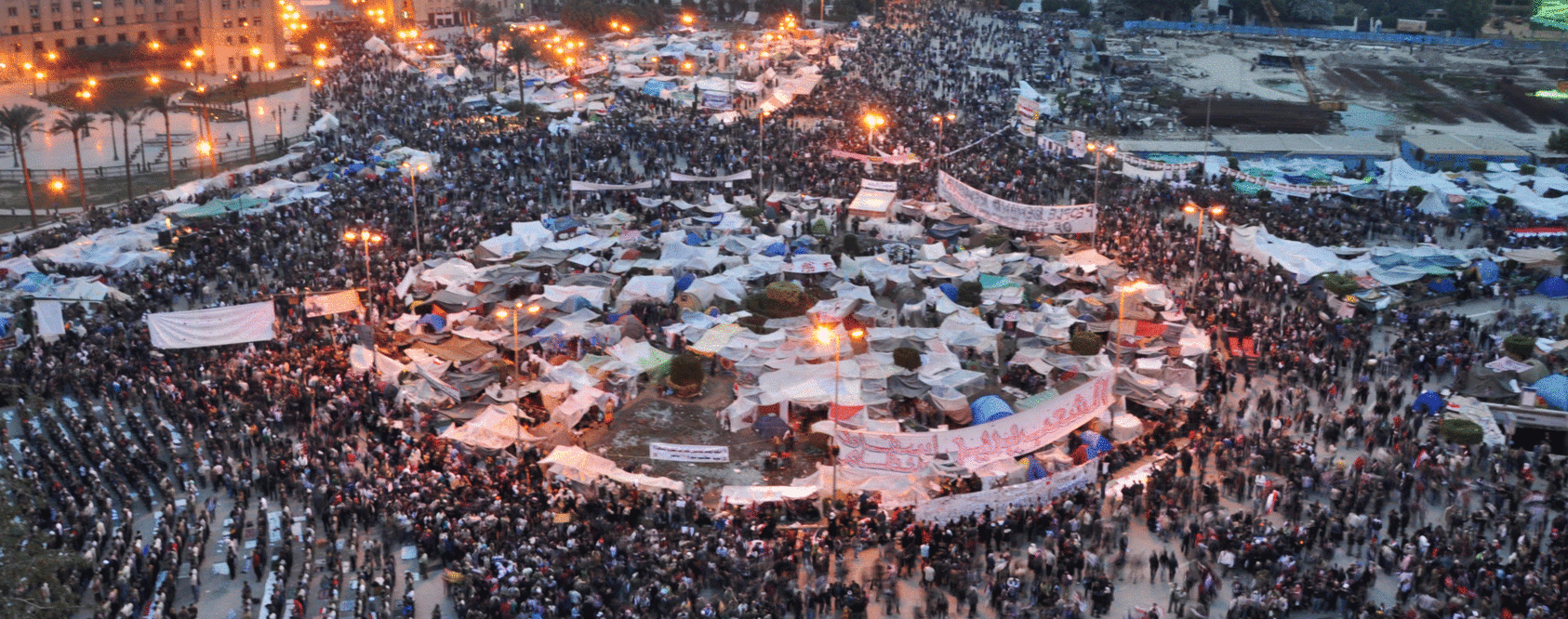
We all know that locally driven solutions are generally more durable than anything imposed from the outside. Furthermore, empirical evidence shows that non-violent campaigns are twice as effective as armed resistance in challenging the most formidable opponents, including dictators willing to use violence against their own people. My research partner, Erica Chenoweth, and I elaborate on these perhaps counter-intuitive findings in our book Why Civil Resistance Works (Columbia University Press, 2011).
The need to evaluate which types of interventions work and which don’t was elevated in the U.S. State Department’s last Quadrennial Diplomacy and Development Review (QDDR), and it will certainly attract renewed attention in round two. We all know measuring the effectiveness of any preventive action is difficult. Creating incentives to prioritize prevention over crisis response is even more difficult.
I’ve worked inside and outside of government with campaigns to challenge corruption, dictatorship, violent extremism and foreign occupation. Before joining USIP and the Atlantic Council, I was with the State Department’s Bureau of Conflict Stabilization Operations (CSO), most recently deployed to Turkey to work with the Syrian opposition.
I saw a hugely courageous non-violent popular uprising against a terrible dictatorship in Syria morph into violence and witnessed the tragically destructive consequences. It has forced me to think long and hard about what the U.S. government and other external supporters can do to provide catalytic support to non-violent movements and help create the necessary environment for non-violent civic action before the pressure to take up arms or to embrace violent extremists becomes too strong.
Elusive constancy
So, what capabilities would the U.S. and other supportive governments need in the future, particularly in the next 10 years, to achieve “persistent engagement,” that oft-desired demonstration of consistent, long-term backing for civil society and civic activists struggling non-violently for their democratic rights in repressive environments?
One must-have element is truly expeditionary diplomacy – getting out of fortified offices to engage with a broad range of groups in the populace, notably outside of capitals. In the aftermath of the September 2012 attacks on the U.S. compounds in Benghazi, Libya, that killed U.S. Ambassador Chris Stevens and three other Americans, the key is finding the right balance between security and engagement for officials of the State Department and the U.S. Agency for International Development.
The zero-risk approach is preventing diplomats and development workers from getting out from behind the wire and adapting to dynamic political and security environments. Having a finger on the pulse of the non-elites is essential to anticipating violent conflict and devising potentially useful programmatic, small-grant and/or other interventions.
Building on innovations and early lessons gleaned by the State Department’s CSO bureau and other U.S. government offices in conflict zones, we need greater investment in a broader and more diverse cohort of civilians with unique skill-sets. Those skills include mediation, facilitation, non-violent civic organizing, rule-of-law, security sector reform (SSR) and the field of disarmament, demobilization and reintegration (DDR) of irregular forces.
Furthermore, we need those kinds of personnel to be prepared to deploy to conflict zones and engage with governments and with non-governmental players such as civil society and business to, in turn, help build the local capacity to prevent and manage violent conflict. The key is the ability to adapt, and to support local counterparts rather than taking over ourselves, and to use our convening authority to bring together reformers in government with civil society members pushing for non-violent change.
Strengthening local activists
We also need to rally around a truly effective model for training trainers, whereby civil society and other leaders from conflict zones attain pivotal capabilities such as non-violent resistance, conflict resolution and facilitation, as well as the skills required to train others locally. USIP, for example, has worked with civil society, government and minority groups in Iraq since 2004. That includes an initiative that brought together Iraqis from different ethnic groups to develop a TV show called “Salam Shabab” that focused on creative conflict resolution. USIP now is working with South Sudanese to do the same there with the radio program “Sawa Shabab.”
The Institute has also supported a civic organization in Afghanistan, the Organization for Social and Cultural Awareness and Rehabilitation (OSCAR) which has specialized in conducting trainings in non-violent civic mobilization to challenge corruption and extremism in the volatile eastern part of the country. OSCAR translated civil resistance materials into Pashto and created a training curriculum adapted to the local challenges and circumstances.
We also need to focus more at local and regional levels, where change can happen more often, in part because it remains undetected by the far-away and largely disconnected central government that often is the main source of repression. Forging partnerships with local government, civic leaders, professionals and volunteer organizations that have local credibility can support the process of mobilizing non-violently for social, political, and economic justice.
We need to take better advantage of local-level contacts we have developed over the years -- those trained in facilitation, conflict resolution and civic mobilization -- and support links between local, provincial and national levels where possible.
In Iraq, for example, national Sunni and Shia leaders often were disconnected from local communities. Universities outside of capitals also may be under-utilized assets – places where education and training on civic mobilization may be particularly useful. That’s also a crucial way to reach youth, who have the potential to be the most creative non-violent mobilizers in any society.
Resources and technology
One essential resource for embassies should be the Diplomat’s Handbook for Democracy Development Support by Jeremy Kinsman and Kurt Bassuener (Center for International Governance Innovation, 2013, www.diplomatshandbook.org). It identifies a “toolkit” of creative, human and material resources available to diplomatic missions, ranging from the use of embassy seed funding to the practice of being physically present to deter violence against non-violent activists, along with a dozen case studies A companion guide, Military Engagement: Influencing Armed Forces Worldwide to Support Democratic Transitions by former U.S. Director of National Intelligence Dennis Blair (Brookings Institution Press, 2013), shows how the armed forces from democratic countries can positively influence the behaviors of security forces in non-democratic and transitioning countries.
The creative use of technology opens another avenue for peacebuilding. USIP, for example, has supported the use of technology to monitor and prevent electoral violence in Pakistan, evaluated how social media is being used in Syria and trained Iraqi civil society organizations to better use technology to monitor and respond to violence. The Institute will be hosting a two-day workshop in late-July called “People & Tech: Civic Action in Restrictive Spaces”to examine the practical nexus between technology and civic mobilization and to develop tools that can be used in the field.
Partnerships with tech firms could help develop technologies to support early warning, early action, cyber-circumvention and peer-to-peer communications to help non-violent activists plan, mobilize, recruit and act.
Small grants could be distributed to civic groups in ways that enhance cooperation and maximize the potential for collective non-violent action. One of the main criteria could be the volunteer base of potential partners. Training could be linked to specific projects related to local campaigns with small amounts of seed funding. Grants mechanisms also need to be leaner and more flexible to help non-violent civic groups remain resilient and responsive in repressive environments. And why not strengthen more local non-governmental organizations to become effective providers of small grants too?
Partnerships
The U.S. also could forge stronger partnerships with those who have participated in the State Department’s International Visitor Leadership Program or in the Fulbright and other exchange programs. These individuals boast a wealth of knowledge, often have extensive local networks and could significantly boost our analytic and program efforts in the field. They could be increasingly brought on as advisors and program managers for U.S. government-sponsored programs.
The U.S. should broaden and strengthen partnerships with foundations and non-governmental groups that can provide small grants rapidly. They can support artists, musicians, playwrights and others whose work inspires solidarity, gives people the courage to challenge repression, and helps counter the myth that violence is effective. In-country diplomatic missions also should be more serious about establishing and using donor forums to coordinate aid to civil society based on comparative advantages of each specific donor.
A critical investment would be in independent local media that can communicate messages to support non-violent change processes and discourage violence without being U.S. government mouthpieces.
At a time when public support for long, resource-intensive military engagements is waning and governments are cracking down on civil society worldwide, it is worth examining the most promising tools and approaches that U.S. government and other external actors possess to provide catalytic support for non-violent agents of change. Their local mobilization efforts, after all, hold the greatest potential for addressing drivers of violent conflict, challenging extremist voices and achieving a just peace.
Maria Stephan is a senior policy fellow at USIP and a nonresident senior fellow at the Atlantic Council. She focuses on the dynamics of civil resistance for violent conflict prevention and democratic development. This article is based on a presentation she gave at a March 18, 2014, conference organized by the Arlington, Virginia-based Center for Naval Analysis. A final report from the conference is available here.
